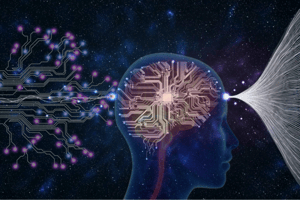scenario modeling digital twin simulation simulation and modeling Government
Making your smart city smarter with digital twin technology
"I think that all government is a waste of taxpayer money. My dream is to have the park system privatized and run entirely by for-profit corporations, like Chuck E. Cheese. They have an impeccable business model." - Ron Swanson, Pawnee Director of the Parks Department, NBC's Parks and Recreation.
Parks and Recreation (or Parks and Rec) is a TV show about a cheerful mid-level town official bogged down by bureaucracy and by her colleagues. But like so much satire, it's funny because it taps into a commonly held view. In this case, that government, particularly local government, is overly bureaucratic and inefficient. The last thing that city government is usually known for is its use of cutting-edge technology and its ability to optimize its functions for the betterment of citizens.
But it doesn't have to be this way; a city can be a smart city. The term" smart city" refers to the use of technology, particularly sensors and IoT (Internet of Things) devices, to gather data throughout a city and the use of AI and data analysis and visualization to monitor and analyze that data. But, it also refers to how a city then uses this data to plan and govern. The goal is to "improve operational efficiency, share information with the public and provide a better quality of government service and citizen welfare." A smart city "means smarter urban transport networks, upgraded water supply, waste disposal facilities, and more efficient ways to light and heat buildings. It also means a more interactive and responsive city administration, safer public spaces, and meeting the needs of an aging population." The goal is that a smart city is more efficient, effective, and resilient.
Because data only becomes information with context, a powerful technology tool in the arsenal of a smart city is to have a virtual representation of the city, called a digital twin. Fed with real-time data from sensors and IoT devices, it enables real-time simulation and scenario modeling of everything from traffic patterns affecting garbage pickup to how the city is prepared and resilient for catastrophic events like hurricanes and earthquakes. Managing day-to-day operations and preparing for future "what-if" scenarios make digital twins a vital part of any smart city efforts.
However, as powerful as it is, scenario modeling and simulation using a digital twin of a city's physical infrastructure is only part of the story. Like a company, cities are more than just physical assets and infrastructure. There are processes for everything from garbage pickup to collecting utility payments from citizens. And like any organization, those processes may or may not be efficient, effective, and resilient. A "what-if" scenario such as "how prepared are we for suddenly experiencing a surge in water demand?" is partly about infrastructure. But, it’s also about process, "A critical element in increasing water availability would be to explore alternatives to groundwater consumption…Smart cities can adopt a circular approach of reusing water multiple times to reduce their dependency on freshwater. Wastewater plants with relevant technologies can be installed in the city to treat municipal waste efficiently.”
As we discussed in a recent blog, BusinessOptix Digital Twin technology “is a dynamic digital model updated with real-world data. We can use it to better understand how our organization is currently performing and predict how it will respond to change because we can alter various parameters within the virtual environment.” This technology applies to a city as much as it does to a company. BusinessOptix’s digital twin technology enables a city to explore various disruptive scenarios without risk to real-world operations.
Now imagine the power of a smart city combining the digital twin of its physical infrastructure with a digital twin of its processes. With the operating model of a city modeled, fueled by real-time data from sensors and IoT devices, city managers can drill down into the processes behind every element in that model. Returning to our water demand example, assigning metrics to physical water systems processes enables cities to perform more comprehensive and effective "what if" scenario modeling to better plan for future demand increases and ensure resilience against possible catastrophic events.
Whether a city is a smart city isn’t a binary question: any city can become smarter in its use of technology. And a crucial part of this is the deployment of digital twins of both the physical city and its processes. The BusinessOptix platform should be integral to any city’s move to make itself smarter.
References:
https://www.challenge.org/insights/digital-twins-and-smart-cities/
https://www.twi-global.com/technical-knowledge/faqs/what-is-a-smart-city
https://constructiontimes.co.in/sustainable-water-management-for-smart-cities/#:~:text=Smart%20cities%20can%20adopt%20a,to%20treat%20municipal%20waste%20efficiently (Link no longer available)



